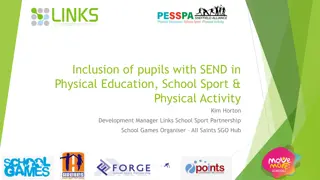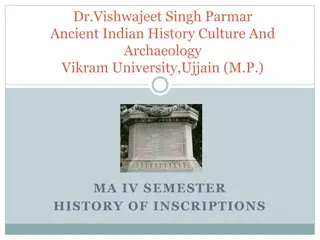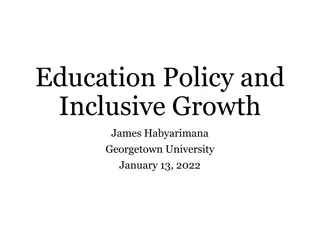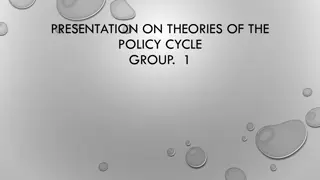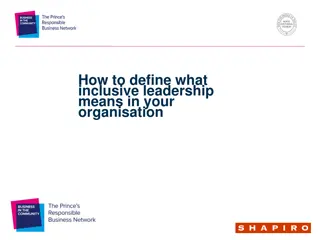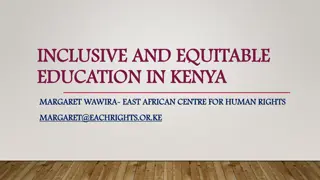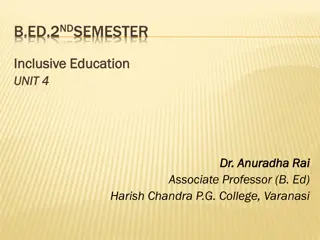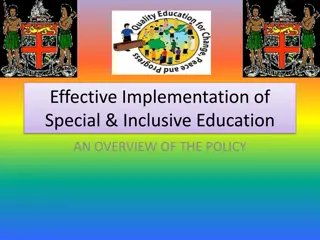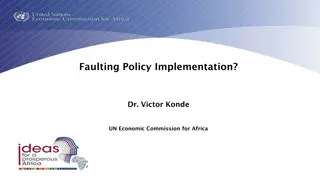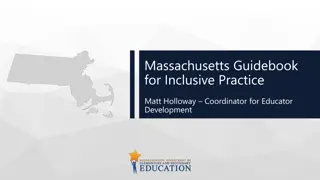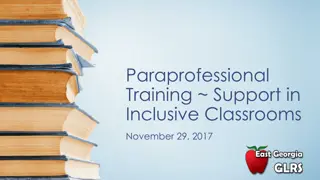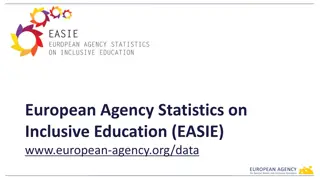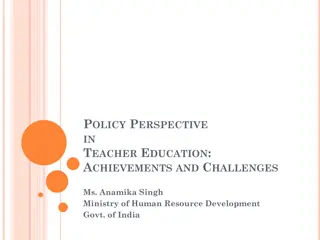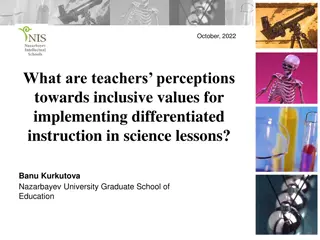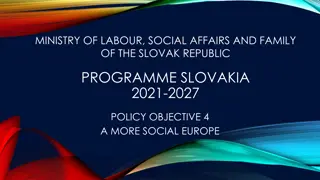Evolution of Inclusive Education Policy in India
The evolution of inclusive education policy in India can be traced back to the initiatives of the Indian Education Commission and the Kothari Commission in the 1960s. These commissions highlighted the importance of providing education to children with disabilities within the general education system. Subsequent developments such as the National Education Policy of 1968 further emphasized the need for expanding educational facilities for physically and mentally handicapped children, promoting integrated programs, and ensuring equal access to education for all children in India.
Download Presentation

Please find below an Image/Link to download the presentation.
The content on the website is provided AS IS for your information and personal use only. It may not be sold, licensed, or shared on other websites without obtaining consent from the author.If you encounter any issues during the download, it is possible that the publisher has removed the file from their server.
You are allowed to download the files provided on this website for personal or commercial use, subject to the condition that they are used lawfully. All files are the property of their respective owners.
The content on the website is provided AS IS for your information and personal use only. It may not be sold, licensed, or shared on other websites without obtaining consent from the author.
E N D
Presentation Transcript
NATIONAL INITIATIVES Dr. Geeta Rani, Gaur Brahman College of Education, Rohtak.
THE INDIAN EDUCATION COMMISSION (1964-66) The Indian Education Commission was the first statutory body to suggest that the education of handicapped children has to be organized not merely on humanitarian grounds, but also on grounds of utility. The Commission also emphasized that the education of children with disabilities should be an inseparable part of the general education system .
At the times when the Commission made its recommendations there were less than 250 special schools in India. The Commission felt that services for children with disabilities were extremely inadequate and recommended the adoption of a dual approach, namely, the provisions of special as well as integrated education to improve the situation. The Commission also specifically emphasized the importance of integrated education in developing mutual understanding between children with and without disabilities. 10/3/2024 3
KOTHARI COMMISSION:- 10/3/2024 The first educational commission in India (Kothari Commission, 1964-66) addressed issues of access and participation by all. It stressed a common school system open to all children irrespective of caste, creed, community, religion, economic condition and social status. 4
CONTD... 10/3/2024 In 1968, the National Education Policy followed the commission s recommendations and suggested the expansion of educational facilities for physically and mentally handicapped children, and the development of an integrated programme enabling handicapped children to study in regular schools. 5
CONTD 10/3/2024 In 1968, the National Education Policy followed the commission s recommendations and suggested the expansion of educational facilities for physically and mentally handicapped children, and the development of an integrated programme enabling handicapped children to study in regular schools. 6
2. NATIONAL POLICYON EDUCATION (NPE, 1968): 10/3/2024 In 1968, the Indian Government formulated the National Policy on Education for all government schools and articulated a need to integrate students with disabilities. It emphasized that whenever feasible, the education of children with motor handicaps and other mild disabilities should be provided in regular schools. 7
3. INTEGRATED EDUCATIONFOR DISABLED CHILDREN (IEDC, 1974): In 1974, the Ministry of Social Justice and Empowerment, Government of India, initiated the IEDC program to promote the integration of students with mild to moderate disabilities into regular schools. The state governments were provided 50 percent financial assistance to implement this program in regular schools. However, the program met with little success. 8 10/3/2024
Due to the failure of the IEDC scheme, it was revised in 1992. Until 1990, the scheme was implemented in 14 states. Kerala is the only state that has shown remarkable progress in implementing this scheme. In Kerala, the scheme has been implemented in 4,487 schools and 12,961 children have been served under this scheme By 1979-80, only 1,881 children from 81 schools all over the country had benefited from this program. 10/3/2024 9
4. NATIONAL POLICY ON EDUCATION (NPE) (1986):- Two decades later, the National Policy on Education (NPE) (1986) stressed the removal of disparities in education, while attending to the specific needs of those who had been denied equality so far (MHRD, 1986). It stated the objective should be to integrate the physically and mentally handicapped with the general community as equal partners, to prepare them for normal growth, and to enable them to face life with courage and confidence . 10/3/2024 10
CONTD 10/3/2024 In 1987, to fulfill the provisions for disabled children in the NPE, the government launched the Project for Integrated Education Development (PIED). It states wherever feasible, the education of children with motor handicaps and other mild handicaps will be in common with that of others . 11
CONTD 10/3/2024 According to the NPE, the indicators of integration are that handicapped people enjoy the same rights as the rest, have opportunities for growth and development in environmental conditions available to the rest, have access to the quality of life like any other citizen, and are treated as equal in the community . 12
CONTD 10/3/2024 The programme of action outlined measures to implement the policy including massive in-service training programmes for teachers; an orientation programme for administers; the development of supervisory expertise in resource institutions for school education at the district and block level; and provision of incentives such as supply of aids, appliances, textbooks and school uniforms. 13
THANK YOU. Stay Home. Stay Safe.



